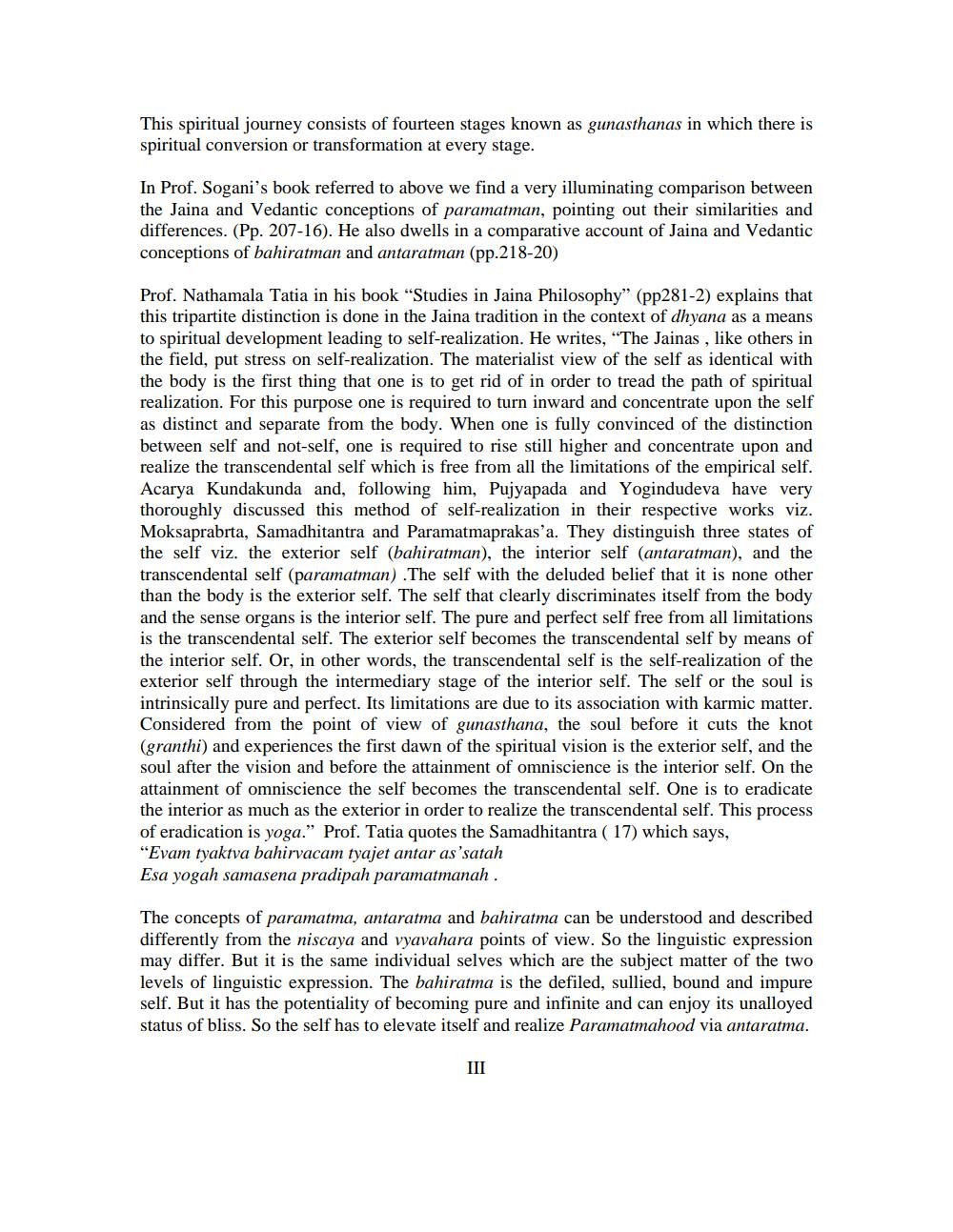Book Title: Concepts of Parmatma Antaratma Anatma in Philosophy of Dada Bhagwan Author(s): S R Bhatt Publisher: S R Bhatt View full book textPage 7
________________ This spiritual journey consists of fourteen stages known as gunasthanas in which there is spiritual conversion or transformation at every stage. In Prof. Sogani's book referred to above we find a very illuminating comparison between the Jaina and Vedantic conceptions of paramatman, pointing out their similarities and differences. (Pp. 207-16). He also dwells in a comparative account of Jaina and Vedantic conceptions of bahiratman and antaratman (pp.218-20) Prof. Nathamala Tatia in his book “Studies in Jaina Philosophy" (pp281-2) explains that this tripartite distinction is done in the Jaina tradition in the context of dhyana as a means to spiritual development leading to self-realization. He writes, “The Jainas , like others in the field, put stress on self-realization. The materialist view of the self as identical with the body is the first thing that one is to get rid of in order to tread the path of spiritual realization. For this purpose one is required to turn inward and concentrate upon the self as distinct and separate from the body. When one is fully convinced of the distinction between self and not-self, one is required to rise still higher and concentrate upon and realize the transcendental self which is free from all the limitations of the empirical self. Acarya Kundakunda and, following him, Pujyapada and Yogindudeva have very thoroughly discussed this method of self-realization in their respective works viz. Moksaprabrta, Samadhitantra and Paramatmaprakas'a. They distinguish three states of the self viz. the exterior self (bahiratman), the interior self (antaratman), and the transcendental self (paramatman).The self with the deluded belief that it is none other than the body is the exterior self. The self that clearly discriminates itself from the body and the sense organs is the interior self. The pure and perfect self free from all limitations is the transcendental self. The exterior self becomes the transcendental self by means of the interior self. Or, in other words, the transcendental self is the self-realization of the exterior self through the intermediary stage of the interior self. The self or the soul is intrinsically pure and perfect. Its limitations are due to its association with karmic matter. Considered from the point of view of gunasthana, the soul before it cuts the knot (granthi) and experiences the first dawn of the spiritual vision is the exterior self, and the soul after the vision and before the attainment of omniscience is the interior self. On the attainment of omniscience the self becomes the transcendental self. One is to eradicate the interior as much as the exterior in order to realize the transcendental self. This process of eradication is yoga.” Prof. Tatia quotes the Samadhitantra ( 17) which says, "Evam tyaktva bahirvacam tyajet antar as 'satah Esa yogah samasena pradipah paramatmanah. The concepts of paramatma, antaratma and bahiratma can be understood and described differently from the niscaya and vyavahara points of view. So the linguistic expression may differ. But it is the same individual selves which are the subject matter of the two levels of linguistic expression. The bahiratma is the defiled, sullied, bound and impure self. But it has the potentiality of becoming pure and infinite and can enjoy its unalloyed status of bliss. So the self has to elevate itself and realize Paramatmahood via antaratma. IIIPage Navigation
1 ... 5 6 7 8 9 10 11 12 13 14 15 16 17 18 19 20 21 22 23 24
